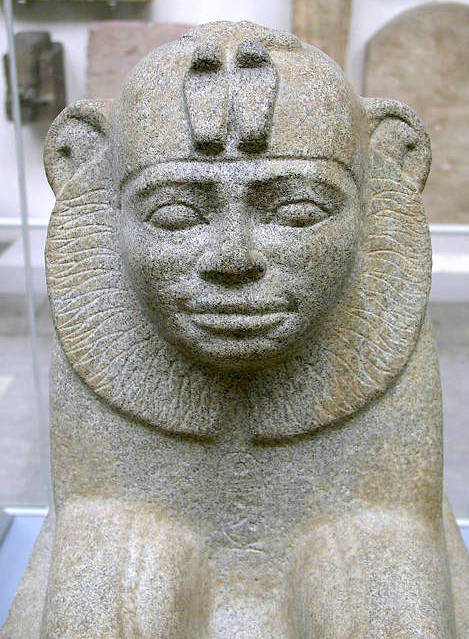Editor’s Note: Peter Lacovara, Senior Curator at Emory University’s Carlos Museum, has worked on numerous expeditions in Egypt and published several books on his work and experience, including The Pyramids and Sphinx, Tombs and Temples of Giza, and Excavating Egypt: Great Discoveries from the Petrie Museum of Egyptology. The first blog in this series can be found here.
For some years, Abydos was a rather difficult place to visit in Egypt, requiring special permission for tourists. Today, the site is a bit more accessible. Though one cannot say that it holds great sightseeing treasures like the Great Pyramids of Giza or the Temples of Luxor, its significance in Egyptian history cannot be questioned.
Many mysteries surround this archaeological site. It was a holy site to the Egyptians, where some of the earliest rulers were probably buried, but it remained a focus of religious activity for thousands of years.
One such mystery surrounds the rubble core and casing stone that marks the remains of the last known royal pyramid built in Egypt, by the founder of the New Kingdom, Ahmose. A textual reference records a pyramid built by Tuthmosis I at Abydos, but nothing of it has ever been discovered.
In 1993, the Pennsylvania-Yale Institute of Fine Arts Expedition, led by Stephen Harvey, began a new survey of this complex, initiating ongoing excavations at and around the pyramid. We visited Stephen in 2002 during his stay at the Hotel Longchamps, a favorite Tour Egypt hotel on Zamalek in Cairo that has also become home for many Egyptologists on their way to their digs. Stephen has since moved on to the University of Chicago’s Oriental Institute, but his excavations continue, and a number of interesting finds have been made.
 In 2003, the team discovered three new buildings in Abydos. Among their findings were walls and related buildings near another pyramid, engraved bricks with the names of people responsible for the construction of the buildings, fragments of decorated limestone temple reliefs, parts of statues, and small inscribed stone slabs used as part of worship that are known as votive stelae.
In 2003, the team discovered three new buildings in Abydos. Among their findings were walls and related buildings near another pyramid, engraved bricks with the names of people responsible for the construction of the buildings, fragments of decorated limestone temple reliefs, parts of statues, and small inscribed stone slabs used as part of worship that are known as votive stelae.
The discoveries are part of a collection of documentation that pushes back the date of complex artistic representation of warfare in Egypt. The site has yielded the earliest-known paintings of horses and chariots used in battle, as well as the earliest-known representation of a practice that later became common in battle documentation: paintings of collections of the severed hands of enemies.
But Abydos has other stories to tell, such as those suggesting some women held extraordinary levels of power within their communities.
One of the buildings the team discovered is a temple that was likely dedicated to Ahmose Nefertary, the wife and sister of the Pharaoh Ahmose, who ruled from about 1550 to 1525 B.C. and built Egypt’s last pyramid. The team also excavated at a pyramid dedicated to another important woman, Queen Tetisheri, grandmother of Ahmose and his wife.
Other areas around the pyramid have proved easier to deal with, however. In addition to the temple believed to be dedicated to Ahmose Nefertary, the team also found another temple. They also will excavate a large structure that measures 115 by 130 feet, and which may have been an administrative or production center for a cult that developed around Ahmose, who was considered a god. Located near what is thought to have been a bakery, this administration building may provide clues that underscore one of the sites fundamental values: it contains structures that are part of a working community. Scholars will learn what role the temple played in the economy and social organization of the community.
Hence, the Pyramid complex of Ahmose at Abydos, located at the junction between the low desert and the floodplain, not only includes a temple, but also a large, unfinished rock-cut tomb far out in the desert, and beyond that, at the foot of the cliffs, a stone and brick-walled platform probably intended to support a building which appears never to have been constructed. About halfway between the pyramid and tomb is the brick shrine dedicated to Ahmose’s grandmother, Tetisheri, where a stela that recorded Ahmose’s decision to build a shrine for her was found.
Really, of all the pyramids built in Egypt, that of Ahmose at Abydos is one of the most intriguing.
It signals the end of the Pyramid Age and to some extent, a changing of the guards in funerary practices. The earliest pyramids were focused on the sun god, Re, but even prior to Ahmose, the mythology surrounding the funerary god, Osiris, was being incorporated into the substructures of the later pyramids. By building his complex at Abydos, Ahmose certainly intended to associate his mortuary cult more directly with Osiris. After Ahmose, the kings of Egypt would, for the most part, completely abandon the pyramid structure.
However, Ahmose’s predecessors in the 17th Dynasty (Second Intermediate Period) were buried under similarly steeply angled, though much smaller, pyramids. Dr. Harvey suggests that Ahmose’s pyramid was intended to evoke a memory of the powerful national rulers of earlier periods, and hence reinforce his legitimacy as their heir. Given the substantial size of Ahmose’s pyramid, this is an attractive suggestion. Clearly, during the future excavations by Harvey’s team, the complex will offer up many interesting finds and advance our knowledge of the founding of Egypt’s New Kingdom empire period.







